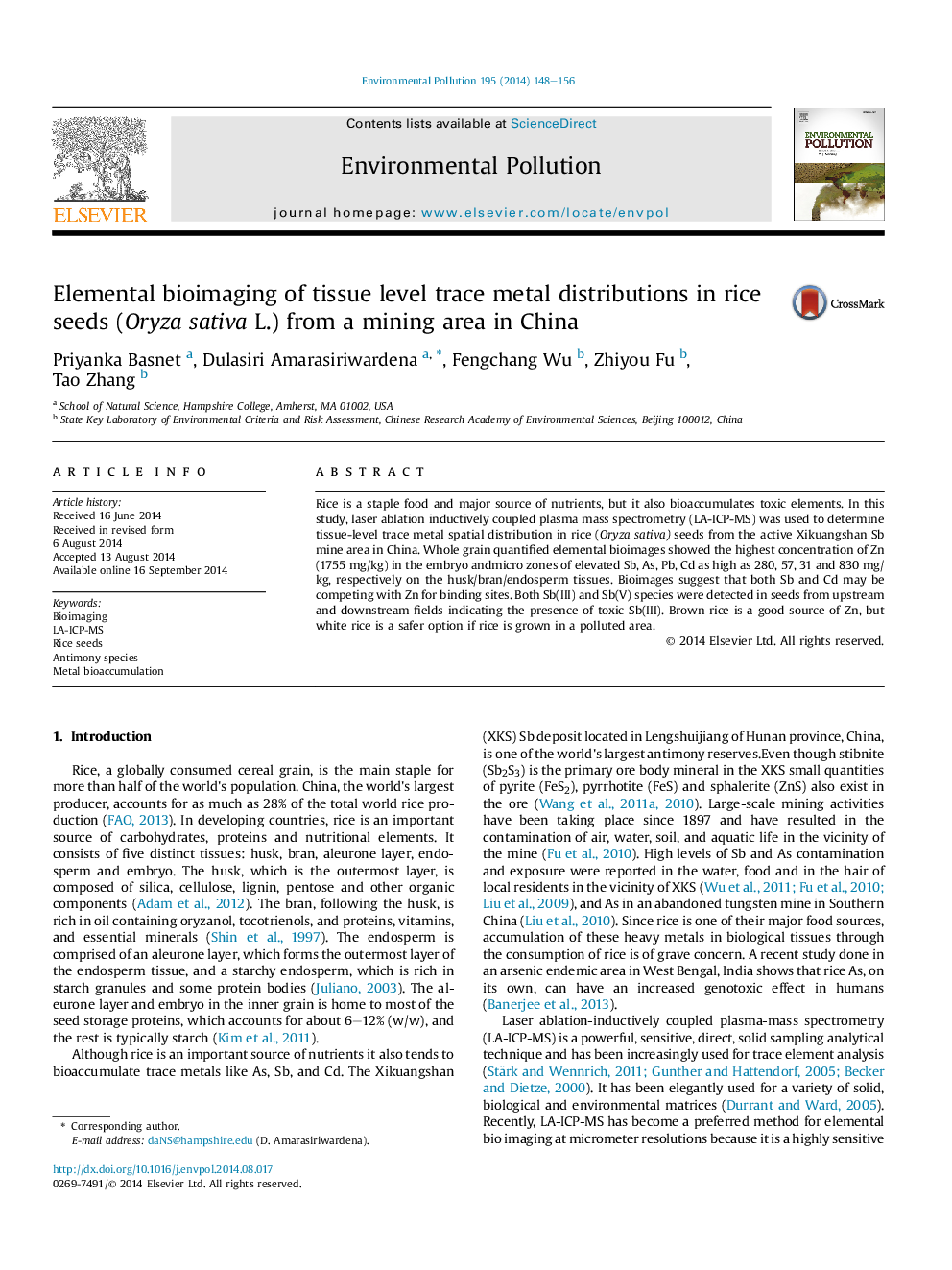| Article ID | Journal | Published Year | Pages | File Type |
|---|---|---|---|---|
| 4424391 | Environmental Pollution | 2014 | 9 Pages |
•A quantitative method to bioimage trace metals in rice via LA-ICP-MS was developed.•Zn concentrations were highest in the embryo followed by bran, husk and endosperm.•Bioimages suggest that Cd and Sb compete for Zn sites in the endosperm.•More toxic Sb(III) was detected in up- and downstream seeds of Xikuangshan Sb mine.•This study offers unique tissue level, locational information on toxic elements.
Rice is a staple food and major source of nutrients, but it also bioaccumulates toxic elements. In this study, laser ablation inductively coupled plasma mass spectrometry (LA-ICP-MS) was used to determine tissue-level trace metal spatial distribution in rice (Oryza sativa) seeds from the active Xikuangshan Sb mine area in China. Whole grain quantified elemental bioimages showed the highest concentration of Zn (1755 mg/kg) in the embryo andmicro zones of elevated Sb, As, Pb, Cd as high as 280, 57, 31 and 830 mg/kg, respectively on the husk/bran/endosperm tissues. Bioimages suggest that both Sb and Cd may be competing with Zn for binding sites. Both Sb(III) and Sb(V) species were detected in seeds from upstream and downstream fields indicating the presence of toxic Sb(III). Brown rice is a good source of Zn, but white rice is a safer option if rice is grown in a polluted area.
Graphical abstractFigure optionsDownload full-size imageDownload as PowerPoint slide
